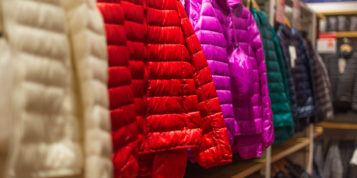In the eyes of the seller, shopping is a travelogue. Retailers often talk about a purchase funnel or a path to purchase – and how it forms part of the consumer journey. That might suggest that it’s a linear process, like most journeys that go from A to B, and for a long time a lot of brands thought that way. They assumed that a shopper picked up initial inspiration (perhaps from an ad), maybe did some research, compared prices and then made a purchase.
We recently carried out a major pan-European research project of 50,000 people across 11 countries, the Retail Buying Study 2018, and it revealed that nothing could be further from the truth. The ‘path to purchase’ is far from linear and could perhaps be better described as a maze.
Inspiring stuff
That ‘initial source of inspiration’, for example, is already a labyrinth worthy of Theseus and the Minotaur. There are online sources like social media, mobile apps and search engines; print, cinema and TV ads; personal recommendations; trying it out at a friend’s house; talking to staff in-store. The list goes on and on – the study highlighted 40+ potential sources.
And even that element is far from linear. We move backwards and forwards through the purchase funnel, and the message from an ad that resonates with a potential buyer at the start of their decision-making process isn’t going to be the messaging that resonates with someone who’s completed their research and narrowed it down to one of two options.
These touchpoints vary by category as well: for example, 41% of clothing shoppers use two-three touchpoints for info, but 56% of alcohol buyers are quick and just use the one. On average, according to the study, shoppers use around four sources per purchase.
Understanding the touchpoints
Retailers need to ask themselves what shoppers are looking for as they go back and forth through this maze of purchase touchpoints. Is it the price? Is it the ‘feel’ of the brand and how it grabs them at an emotional level?
Take a branded video, as one example. At one point during the journey, a shopper will be looking to do in-depth research about the category and will need broad information about what type of product they might need and why. At another point they’ll be on the cusp on making a final decision, so the video should give them the tools they need to choose, for example, a specific model.
How does it all fit together?
Brands and retailers can control a number of these touchpoints as they are owned media: the information on products available on the e-commerce site, for example. Comparing those to the videos on YouTube and the information on the Facebook page allows them to ensure that the content in one location is reflected in the others.
And because our research study showed that online and offline have a role to play, that content and messaging needs to be reflected outside the internet. When someone walks into your store on the high street, are they still getting the information and support they need at the various stages of the purchase journey?
Same touchpoint, different stage
The fact that customers will visit and re-visit the same touchpoint as different stages of their journey to purchase is, like most things in marketing, both a challenge and an opportunity. With online search, for example, shoppers might begin by searching the category (“televisions”), and only much further down the road will they search for specific information on features and functionality (“best value 4K UHD 55 inch screen”).
Some social media platforms also lend themselves to certain stages of the journey more than others. An online video, for example, is useful for allowing potential customers to immerse themselves in the brand, while a blog may well be better for those who wish to immerse themselves in the product detail.
Optimising the message
What the brand or retailer creates in one space it can use elsewhere, as long as it optimises the message for that channel at that particular moment. The advantage is that, done right, it allows brands to make the best use of their assets.
And for those retail brands that exist purely in the e-commerce space, understanding the intricacies of this customer maze to purchase allows them to create a more frictionless retail experience while also building their brand. Those brands already focus on speed and efficiency (because that’s what people expect when they buy online), but can sometimes struggle to build a relationship across multiple channels.
Branding vs. tactical
The research highlighted that retail brands need to be able to identify timing and reach for different information sources and identify which are the key tactical or branding sources. These will vary across different industries and categories, and the path to purchase equally varies for specific retailers, both on- and offline players. Then there are specific target groups and the need to look across borders for international retailers.
In essence, it’s a highly complex ecosystem and not a simple linear progression, no matter what the phrase ‘path to purchase’ might imply. Retailers that adapt their media and messaging accordingly will reap the benefits.





